Transforming Saint Martin's: A Collective Approach to Waste Management
Saint Martin's Clean Sweep: Turning the Tide on Waste with a United Front.
December 31, 2023
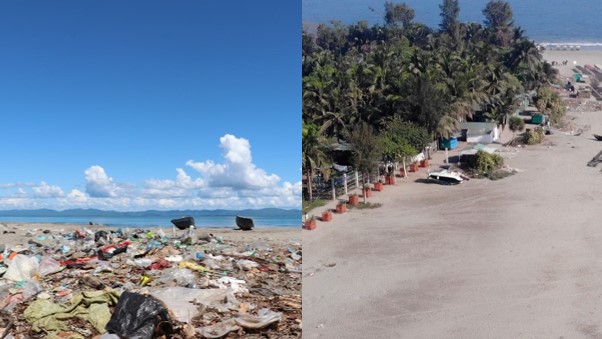
Saint Martin’s indiscriminate waste accumulation at the beachside and clean beach after the intervention.
By Ramiz Uddin, PhD, Head of Experimentation, UNDP Accelerator Lab, Bangladesh.
Sarah Sabin Khan, Head of Solution Mapping, UNDP Accelerator Lab, Bangladesh.
Farhana Yesmen, Program Officer, UNDP Bangladesh.
Samiha Sima, Experimentation and Innovation Associate, UNDP Accelerator Lab Bangladesh.
The southern most point of Bangladesh is a small island (around 3 sq km) proudly floating at the heart of the Bay of Bengal which is home to the only coral reef reserve of the country. But this makes this natural beauty an ecologically critical area, that receives thousands of tourists every day between October and March, the only safe window for tourists to commute from the mainland. This is despite the island’s effective real capacity to welcome less than a thousand visitors on any given day. The uncontrolled and unplanned tourist influx had been posing a myriad of threats to the island’s environment, ecology and biodiversity risking extinction of several endangered species. However, restricting tourists is not as simple as it sounds. The local economy overbearingly depends on the tourists that arrive to the island during peak season. Government stakeholders, local government representatives, defense officers, private sector and community members thus regularly engage among themselves in negotiations related to limiting the number of incoming tourists to the island. The complex dynamics and political economy have often contributed to unfruitful outcomes of development interventions in the island, deterring any sustainable solutions.
In September 2022, the UNDP Accelerator Lab Bangladesh started exploring this complex territory through an area-based approach, running parallel experiments that address multiple challenges of the island at a time. The idea to take an area-based lens to addressing the challenges of this small island stemmed partially from the insight that there are too-many interlinked challenges facing the community that are rooted in the geographic characteristic of the island and require an integrated coherent solution. The other reason was to optimize the small window available during the year to physically move to the island and mobilize resources to run experiments towards an integrated solution. This blog highlights one such experiment which was carried out to immediately address the waste management situation of the island which contributed to its deteriorating environment and biodiversity.
It was understood from the very beginning that the success of any endeavour in the context of the island will critically hinge on building rapport with the local government and engaging the community-based organizations, local communities, and growing number of youth population from the outset. Towards the end of 2022, the Accelerator Lab arranged a series of on-site workshops involving various stakeholders on Saint Martin's Island with the goals of identifying the main challenges confronting the habitants, and, building a trusting relationship with them. A key focus of these workshops was to explore strategies for achieving a balance between conservation of the island’s biodiversity and maintaining sustainable livelihoods for the poverty ridden local population.
Among the major issues that emerged from the sensemaking exercises, waste management, particularly plastic waste, came out on the top. As a small and remote island, Sanit Martin’s lacked any organized management for the substantial amount of waste generated by the tourists, who are usually indifferent about keeping the environment clean. The local government usually has very limited financial, institutional and human capacity to address this challenge effectively. Even the most basic waste management needs have proven to be difficult to handle on the island. For instance, the frequented tourist spots lacked public waste disposal bins which resulted in large scale littering all over the island.
Thus began the initiative to chart out a sustainable waste management pathway for Saint Martin’s Island led by the UNDP Accelerator Lab. Careful assessment over several weeks looked at the waste ecosystem of the island, closely studying the existing highly informal waste collection and management by locals, tourists, private companies, and local officials. Although just the tip of the iceberg, this assessment uncovered some of the most obvious and evident factors that compounded the waste management challenge of the island. The Lab decided to address some of these surface level challenges by offering quick solutions by mobilizing different local stakeholder groups to demonstrate the power of working together. This approach also helped build a good relationship with the locals which is a crucial step towards deeper, more impactful changes that address the root causes and mindsets in the long run.
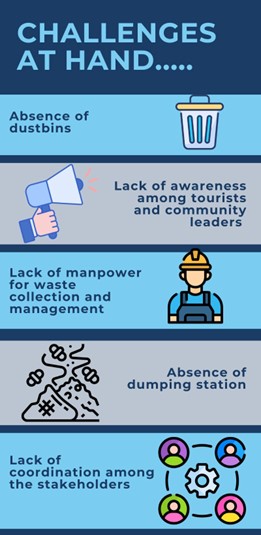
Figure 1: Challenges at hand
Small changes and collective action can make big difference
The Accelerate Lab partnered with the Bangladesh Tourism Board (BTB) and the local government representatives on the island to co-run a number of initiatives and cleaning drives around the main tourist hotspots. This included installing over hundreds of waste bins in public places, re-energizing and repurposing existing local committees for waste collection and processing, and developing advocacy and communications material to influence behavioural changes among tourists.
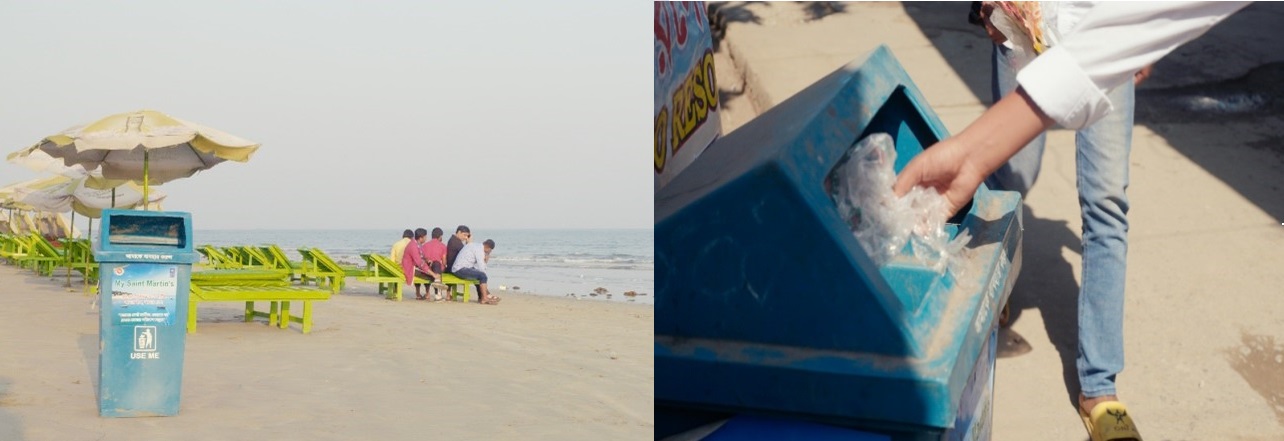
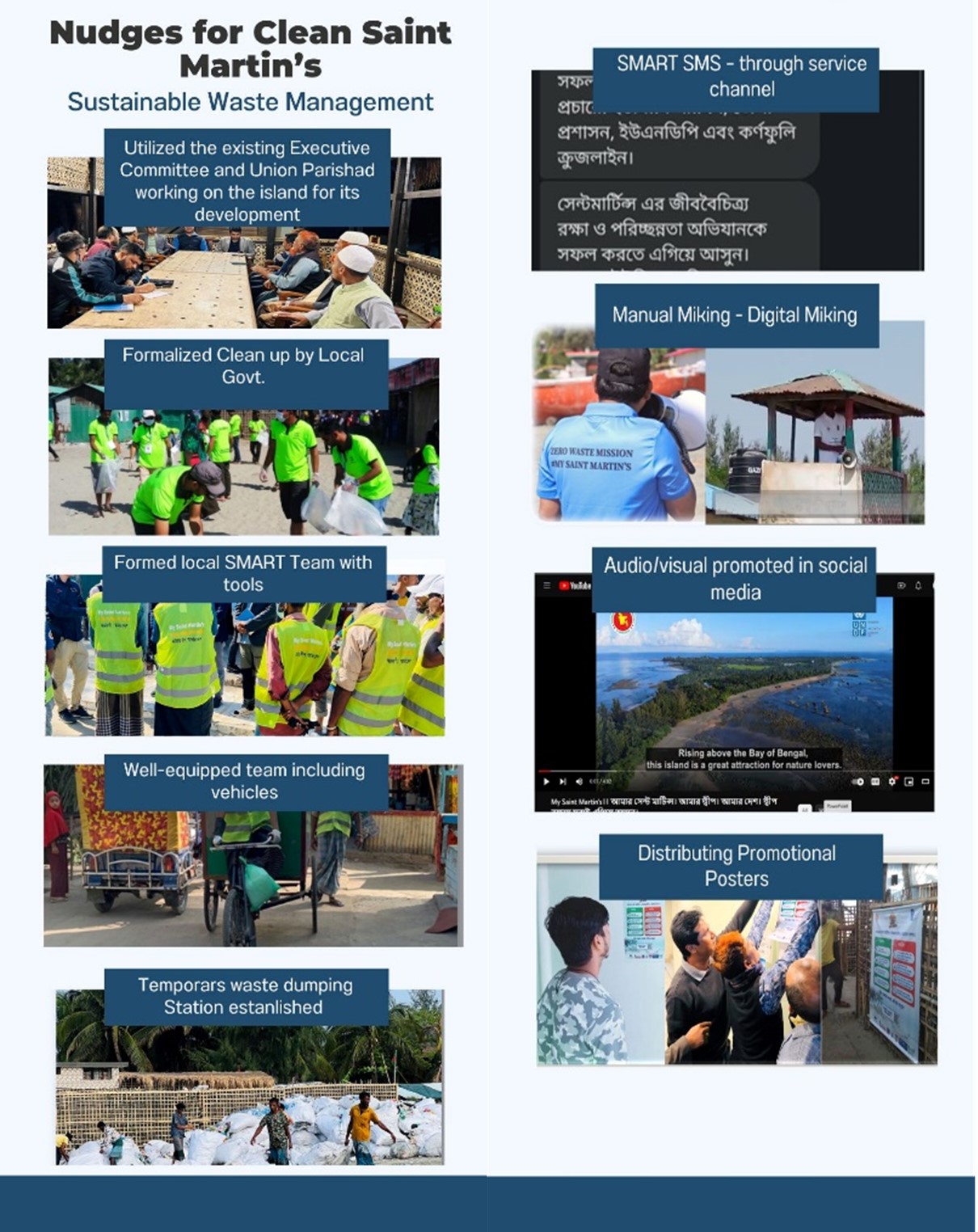
Figure 2: Nudges for Clean Saint Martin’s
To advance the cleaning initiative and ensure its sustainability beyond the experiment, the Lab first re-energized a key committee on the island dedicated to its development. The committee agreed to improve coordination of existing beach cleaning programs run by various groups. Any organization aiming to conduct a beach cleaning campaign would require an approval from the elected local government representative, the Upazila Chairman. The Chairman would then guide them in ensuring cleaning efforts were coordinated and focused where most needed.
In addition to this, a 12-member team, chosen by the executive committee, was set up for regular cleaning, equipped with tools like bags, gloves, masks, and vests. A trust fund with contributions from the national government bodies, local government representatives, private sector actors was created to sustain this team. Every day, this team collects waste from the nine local wards of the island, segregates the non-biodegradable from the biodegradable, and then transfers it for processing. The local administration repurposed six vehicles for dedicated use of waste transfer to dumping and processing sites.
This newly introduced system improved waste collection in the island to a certain degree. However, much more needed to be done for handling the accumulated waste and reducing the amount of plastic waste that was being brought in from mainland and littered in the island by the incoming tourists. To address the latter, local authorities were encouraged to vigorously promote awareness among the incoming tourists. The Lab helped run a communication campaign in this regard. Pre-recorded audio advisory messages in three languages (Bangla, English, and the local dialect) were played in the main jetty through which tourists arrive in cruise ships to the island. Awareness raising messages were communicated via mobile phone text messages, digital banners and posters for both the community and tourists. A dedicated YouTube channel, namely ‘My Saint Matin’s’ was developed and promoted posting videos of on awareness for wider dissemination.
The immediate results that of these experiments were visibly cleaner public places with little to no littering in the beach areas. These collaborative efforts paid off in addressing a lot of the problems and challenges the island faced with keeping spaces clean, particularly plastic waste polluting the sea.
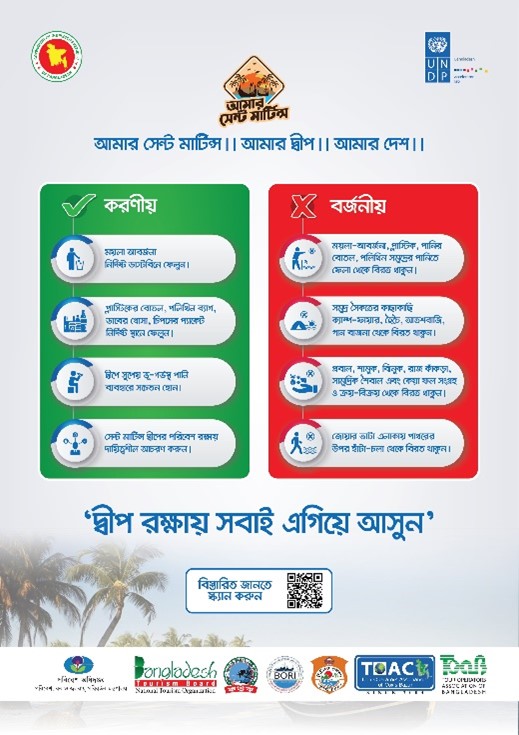
Poster showing dos and don’ts at Saint Martin’s.
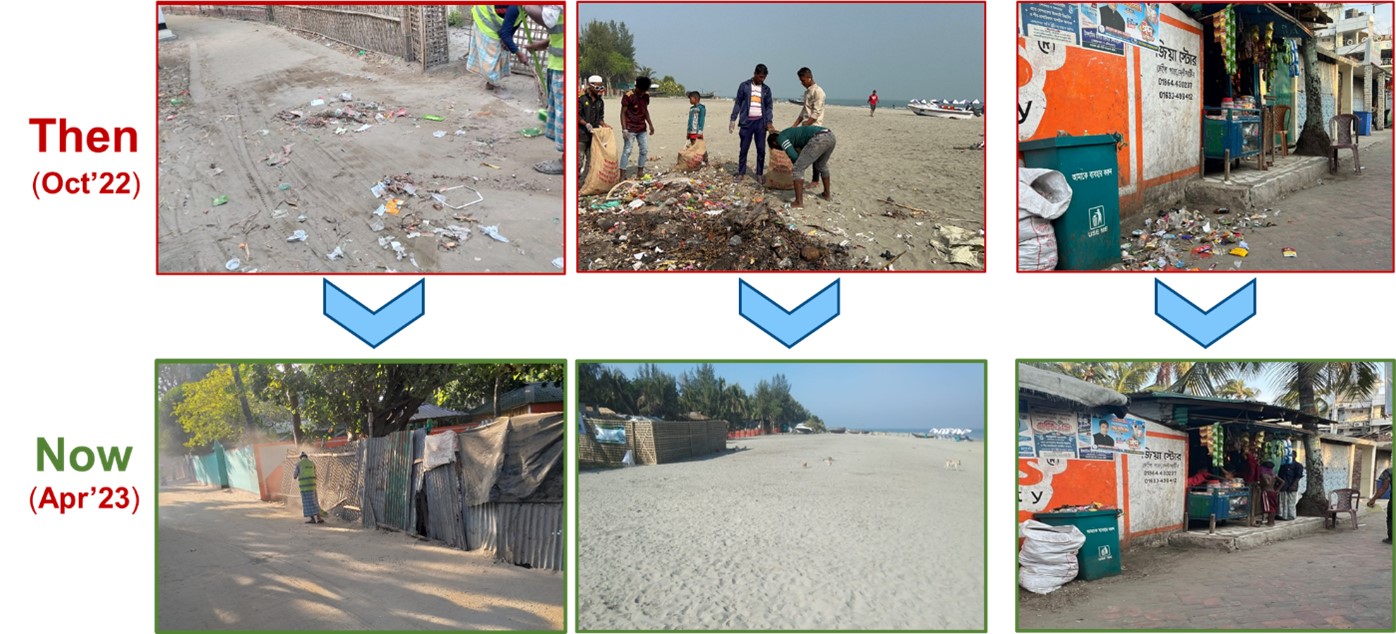
Figure 6:Before after scenario in Saint Martin’s
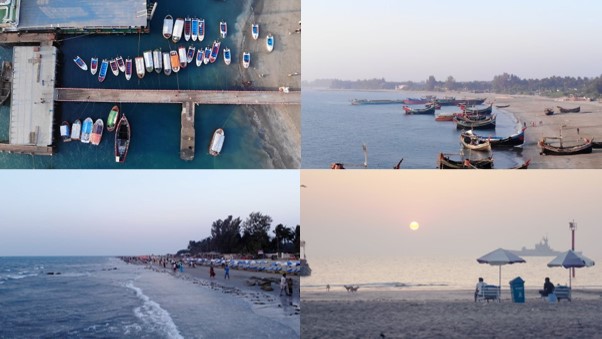
Photo 5: Clean Saint Martin’s
Way forward: from systematic to sustainable waste management
While the systematic coordination and regular practice of cleaning along with behavioral interventions through communication materials have yielded visible results, the stakeholders involved in this collective the experiment are well-aware of the need of a more sustainable model for waste management in the island. The intent behind these experiments was to address some of the surface level issues to rebuild trust among the local stakeholders and faith in collective action which are essential to achieve the required transformations in structures and mental models towards a waste-free island.
Here are some action points going forward:
Join us in preserving the beauty of Saint Martin's Island! Together, we can make a difference in waste management and protect this ecological gem for generations to come. Let's continue our journey toward a cleaner and more sustainable future.
Related
content
content

 Locations
Locations



